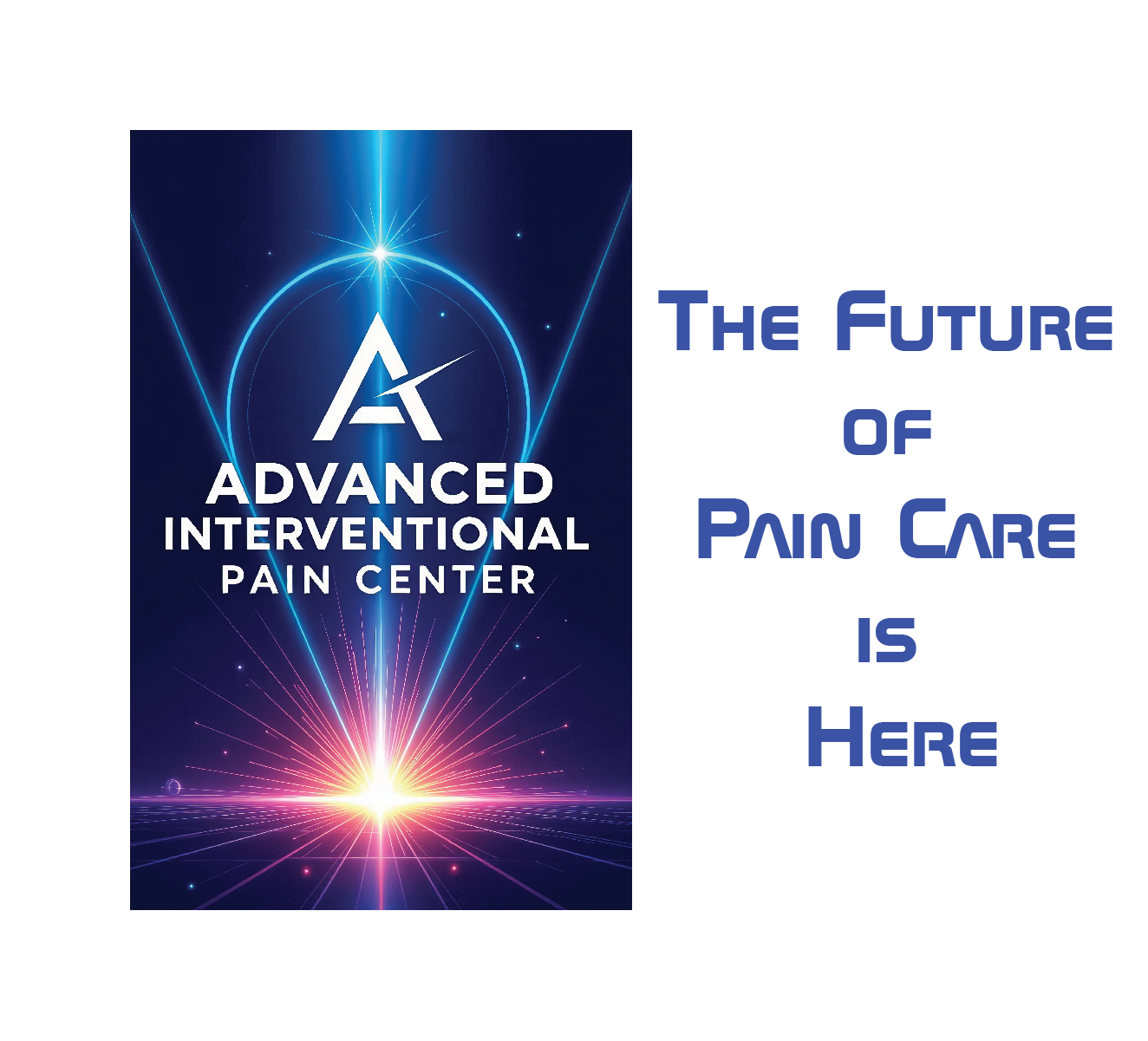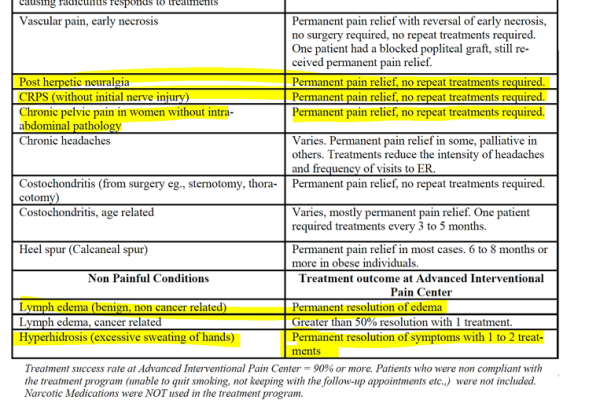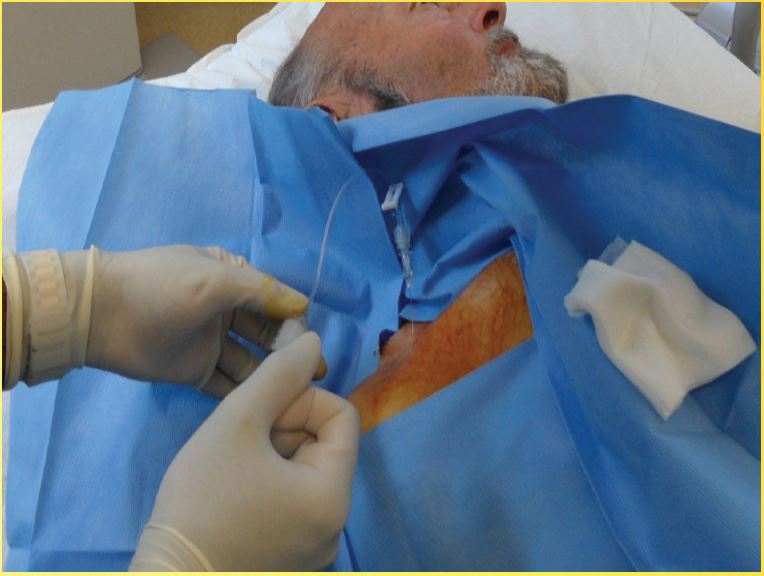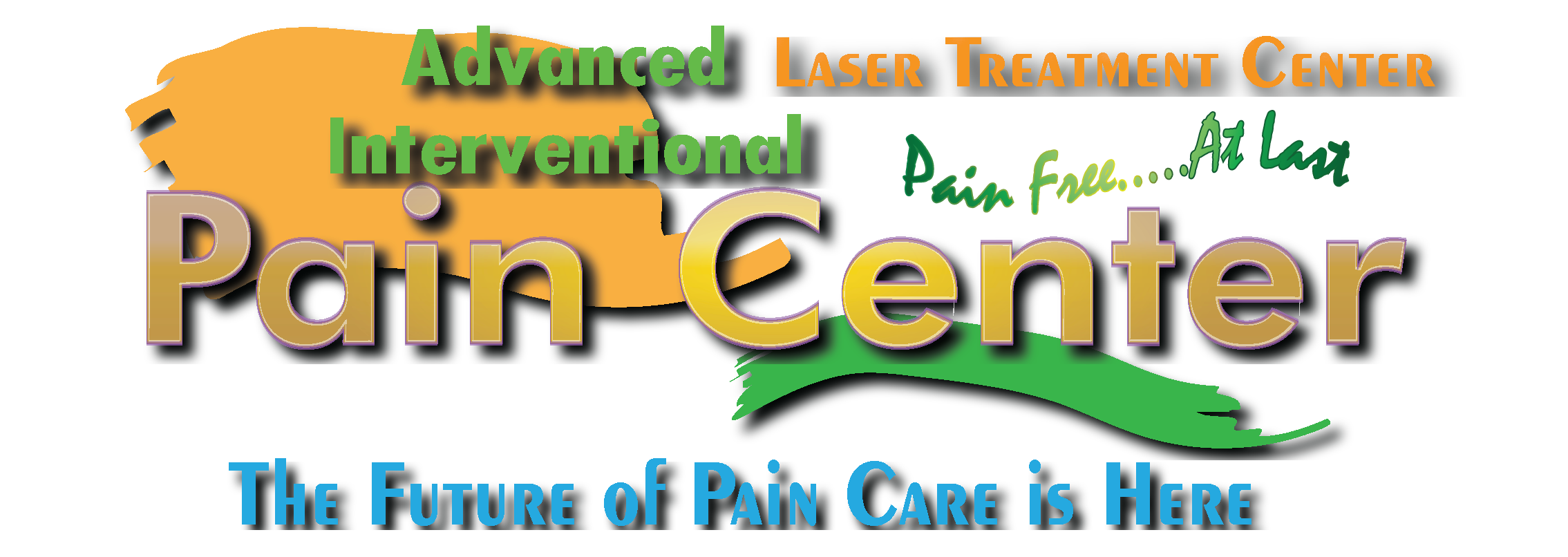The pain success rate also known as pain treatment success rate and pain relief success rate for any pain treatment is defined as the number of patients successfully getting rid of at least 50% of their initial pain symptoms after a specific pain treatment whether it be surgical, injection or other minimally invasive treatments such as laser treatments. An accepted rate is 50% of patients treated get at least 50% of their initial pain symptoms relieved. The latter is the gold standard of many clinical trials testing the effectiveness of numerous pain treatments. We are proud to note that at Advanced Interventional Pain Center, our success rate after treating 3000 individual patients without using any narcotics or addictive medications, is over 90% of patients getting 100% or complete pain relief with only 10% of the patients getting less than 100% or incomplete pain relief.
Evidence presented here is based on real world data (RWD) witnessed, evidenced and recorded in our extensive case series analysis wherein adhering to strict treatment methodology have resulted in outstanding reproduceable treatment successes for the same pain condition. Elsewhere, the use of measurement scales found in numerous research papers exemplify incremental pain treatment results of certain devices and drugs only on paper with no real world evidence leading to poor patient satisfaction and treatment failures. On the contrary, AIPC relies on RWD that result in outstanding pain relief and patient satisfaction through personal attention to every patient presenting for pain care.
Our pain treatments provide long lasting pain relief in a variety of conditions and permanent pain relief in certain tough to treat pain conditions for which there is no known cure nationally or internationally. Our pain center is one of the very few facilities in the world that can effectively treat failed surgical treatments resulting in long term pain relief while reversing the pain related disability caused by the surgery itself. Addictive drugs are never required for any of our pain treatments. Call the toll free number above or 727-474-6507 to make appointments. Our e-mail: referrals@inter-pain.com. To get a PDF of our pain treatment success rate and the various pain conditions we treat click this link:https://inter-pain.com/wp-content/uploads/2025/05/Nations-top-pain-center-trivia.pdf See comprehensive information below for individual pain conditions:





